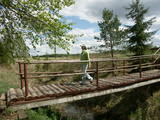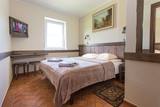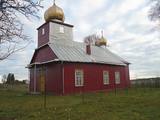| Nr | Name | Beschreibung |
|---|---|---|
|
The rest complex is situated on the shore of the man-made water reservoir, and there are two saunas on the territory – the Big sauna and the Small sauna. In the building of the Big sauna it is possible to organise different events for as many as 40 people, and in summertime – till 60 people. In the Small sauna – up to 20 people. Apart from the saunas, there are offered 20 different picnic places with tables, places for grills and tents, volleyball playgrounds, boats and water-bicycles for rent. |
||
|
Ein kleines, bewaldetes Territorium mit Schwefelquellen, deren bekannteste die Ellīte – Schwefelquelle ist. Sie hat Schwefelwasser mit einen niedrigen Gehalt an Mineralien. Das Wasser hat vermutlich medizinische Eigenschaften. Das Gebiet um den Strom herum ist gut markiert und ein Pfad führt dorthin. Der Strom gilt als Quelle für den Iecava – Fluss. Das Territorium wurde eingerichtet, um die Biotope und Pflanzen des Gebietes zu schützen.
|
||
|
Храм неоднократно горел и строился снова. Теперешняя церковь построена в 1874 году, а после пожара 1927 года была восстановлена в 1932 году. Можно осмотреть алтарную икону«Иисус со святым причастием», две картины И. Зебериньша «Иисус у креста» и «Иисус благословляет детей» (1957 г.). Проспект органа является первым, построенным в «латышском» вкусе органом (резчик по дереву П. Планкус, 1936 г.), а сам инструмент номинирован как самая красивая и самая объемная работа лиепайского мастера Екаба Яугиеша. Трубы органа сделаны из дерева, что является редким случаем. Церковь можно осмотреть изнутри. |
||
|
Eine kleine Stadt unterwegs von Riga nach Bauska. Der Name der Stadt ist in den schriftlichen Quellen im Jahr 1492 erwähnt worden. Hier kann man die evangelisch-lutherische Kirche und den Park des ehemaligen Landgutes besichtigen. |
||
|
Viesu nams "Igne" ir vieta, kur palikt uz vienu nakti vai apmesties uz ilgāku laiku. Tā atrodas netālu Druskininkai Jaskoniai ciematā, tikai 4 km attālumā no pilsētas centra, taču tā ir klusa vieta prom no pilsētas burzma. Iespēja uzņemt līdz 50 cilvēkiem istabās ar labierīcībām. Apmeklētāju ērtībai augstas klases restorāns "Romnesa", omulīga sauna, bezmaksas autostāvvieta un bezvadu internets. Piemērota vieta konferencēm, semināriem, privātiem un korporatīviem pasākumiem. Tiek piedāvātas izglītojošas meistarklases šakotis gatavošanā, Šakotis muzeja apskate. |
||
|
Diese Schänke befindet sich in dem Haus des Verwalters des Landgutes von Koknese und ist im Namen des lettischen Novellenschreibers Rudolfs Blaumanis genannt worden, der auf dem Landgut gelernt und hier zwei Jahr gelebt hat. Lettische Küche: Gemischter Salat Rasols, Heringssalat, Bohnensalat, Salat der Stadt Valmiera, Zwiebelklops, Schweinrippen, hausgemachte Frikadellen, Braten im Meerrettichsoße, gebratene Leber, Hering mit Quark, geschichtetes Haferflocken-Dessert. Das besondere Gericht: Scheibe des Schänkwirtes. |
||
|
Ein Abschnitt der Schmalspurbahnlinie mit Spurbreite 750 mm, der Alūksne un Gulbene verbindet ist in Teil der ehemaligen Eisenbahnlinie Stukmaņi – Valka. Zurzeit ist es die einzige Schmalspurbahn mit ständigem Personenverkehr in Lettland, die noch im Betrieb ist. Die Bānītis fährt jeden Tag. Ein im Südteil der Stadt Alūksne gebautes Stationsgebäude wurde 1903 eröffnet. Die Linie ist 33 km lang und hat 10 Stationen und Haltepunkte. Die Fahrt mit der Bānītis dauert ~ eineinhalb Stunden. Populär ist ein jährliches Fest der Schmalspurbahn Alūksne – Gulbene, zu dem viele Gäste kommen. |
||
|
Der Familienladen bietet Produkte kleiner lettischer Hersteller und Handwerker in Ikšķile an. Das Geschäft ist nicht nur bei den Bewohnern von Ikšķile und Umgebung beliebt, sondern es kommen auch Kunden aus Riga, Ķekava, Ogre und anderen Städten. Ein Online-Shop wurde ebenfalls eingerichtet. |
||
|
Er befindet sich am Rand der Landstraße A9, hinter der Lestener Kreuzung 0,5km in Richtung Riga. Der Stein (Autor: Ojārs Feldbergs) war 1991 an der Stelle des ehemaligen Hauses „Rumbas“ aufgestellt worden zum Gedenken an die Verteidiger der Kurländischen Festung, die einer 10fachen Übermacht der sowjetischen Armee trotzten und somit etwa 300 000 lettischen Kriegsflüchtlingen die Möglichkeit gaben, dem darauf folgenden sowjetischen Terror zu entfliehen. |
||
|
This territory is around 9 square kilometres in size and is found to the North of the village of Kūdra, where the so-called old peat quarries are found. Peat was extracted here during the first period of Latvian independence. Today the territory is overgrown, preserving the old and flooded quarries which offer a very unusual landscape. The best way to examine them is on foot or bike, taking the road from the Kūdra railroad station which leads to Lake Sloka. |
||
|
Notra’s Old-Believers Prayer House. The construction works
lasted from 1928 till 1931. The church is situated on the site of the
previous church that was originally built in 1853.
|
||
|
The sculptor has established the landscape of his farm, producing artworks of wood and stone. One of his artworks, a spoon that is 6.2 m high, is in the village of Irlava. You can go on a tour and order and purchase various wood products. |
||
|
Is an ancient Courlandian castle hill and is found in the very centre of Alsunga. It was named in 1659 when General Berg from Kurzeme put cannons on it to attack Swedish forces that had fortified themselves in the Alsunga castle. The hill is 8 to 10 metres high and 24 x 54 metres wide, offering a lovely view of the St Michael Roman Catholic Church, as well as the Alsunga windmill lake that is alongside it. There is a distinct terrace around the hill, and it once was the foundation of wooden defensive structures. On the other side of the street, to the West of the castle hill, is a cemetery with fire graves of Courlandians that date back to the 11th to 13th century. Archaeologists examined the area during the middle part of the last century. The Suiti celebrate Easter and other holidays on the hill. |
||
|
Kaunas Castle is the oldest stone castle in Lithuania and interestingly enough, the museum that is inside is also the oldest one in Lithuania. It's possible to take a tour to get know more about Kaunas Castle and also visit the museum where there's not only information about the castle but also about the city of Kaunas itself and much more. |
||
|
Atrodas Taurenē, Gaujas labajā krastā. Muižas apbūve, kurā ietilpst pils (19. gs. 80. gadi, arhitekts – R. G. Šmēlings, historisma un neoklasicisma stils), senie alus pagrabi, klēts, vecā pils un parks, veidojies 19. - 20. gs. Šobrīd muižas pilī atrodas Taurenes pagasta pārvalde un kultūras nams. Muižas kompleksā ietilpst ēka, kurā atrodas Vecpiebalgas novada tūrisma informācijas punkts un Taurenes novadpētniecības ekspozīcija (senajā ledus pagrabā). Parkā (ziemeļos no pils) uzmeklējams piemiņas akmens, kas veltīts komunistiskā terora upuriem. Pie Nēķena muižas sākās 0,4 km garā Cieres dabas taka, kas iepazīstina ar Gaujas krastu mitrājiem. |
||
|
An afforested island in the Gulf of Finland, approximately 14 km to the North of Tallinn. There is a network of small roads and trails on the island. Forests: Mostly 1.1, 1.2 and 4.2. Information: www.aegna.ee. A ferry boat to the island departs from the port at Pirita. Hike around the shore of the island, where you will find all kinds of environments – dunes, sandy areas, rocky areas and places with lots of reeds (~9 km). |
||
|
Pirmo reizi vēstures avotos 1253. g. šī vieta ir minēta kā kuršu apdzīvota apmetne. Laikā no 1637. – 1639. g. te uzcēla pirmās 19 kapelas – t.s. „Krusta ceļa stacijas", kas atgādināja Jeruzalemes Krusta ceļu. Kopš tā laika Žemaišu Kalvarija ir pazīstama kā nozīmīgs svētceļnieku galamērķis. Dažas no Krusta ceļa kapelām ir veidotas 17. – 18 gs., bet citas – 19. gs. Jāatceras, ka vēl pavisam nesen – Padomju laikos svētceļniekus nežēlīgi vajāja un represēja. Mūsdienās pilsētā ir izveidots 21 svētceļnieku „pieturas punkts". Te ik gadu (parasti no 2. – 12. jūlijam) notiek Žemaišu Kalvarijas katoļu draudzes svētki, kas pulcina daudz ļaužu no dažādām Eiropas valstīm. Iespaidīgā katoļu bazilika ir slavena ar Vissvētākās Jaunavas Marijas Katoļu Ģimeņu Karalienes gleznu, kas 17. gs. atvesta no Romas. Tai piedēvē brīnumdarītājas spējas. Interesants ir pilsētas ielu tīklojums, kas atgādina 9. – 13. gs. apdzīvotas vietas ielu plānojumu. Noteikti apskatāms iespaidīgais Žemaišu Kalvarijas pilskalns, kas slejas mazās Varduvas (Varduva) upītes krastā. |
||
|
Im 17. und 18. Jahrhundert besiedelten die Westküste von Peipussee die Altgläubigen, die aus Russland wegen Kirchenreform flüchteten. Die Dörfer der Altgläubigen befinden sich heute kilometerlang am Ufer von Peipussee. Die rund 8 km lange Dorfstrasse (Dõrfer Kasepää, Tiheda, Kükita und Raja) reicht bis zu der Stadt Mustvee und ist heute einer der wenigsten Orten in Estland, wo die Altgläubigen leben. Strassendorf zusammen mit Gebetshäusern und Kulturerbe ist ein attraktives Ausflugsziel und bietet den Gästen stimmungsvolle Erlebnisse. |
||
|
The Dobele Crafts House is to the East of Market Square at Baznīcas Street 8 in Dobele. Enthusiasts use it to preserve ancient traditions from the Zemgale region. Workshops to teach crafts are organised here five days a week. |
||
|
The farm on the banks of the River Navesti is Estonia's largest company engaged in the cultivation and processing of organic medicinal herbs. The farm has an education and health path of medicinal herbs, open from May to September. The Energy Eco-Spa offers holiday, conference and accommodation services with a sauna. Spa experience is with local, ecologically grown herbs together with clay, peat and natural plant oils. Baths, wraps and massages help the body to function naturally and holistically. All the products are natural and fresh and are prepared just for you immediately before the treatment. Farm has a tea house completed in 2010 which is suitable for holding seminars, relaxing and in the summertime also for having meals. Herb presentations are held there - first on the field and then in the tea house. There is also a 13-metre viewing tower by the river from which you can get a good overview of the lands of the farm. |
||
























